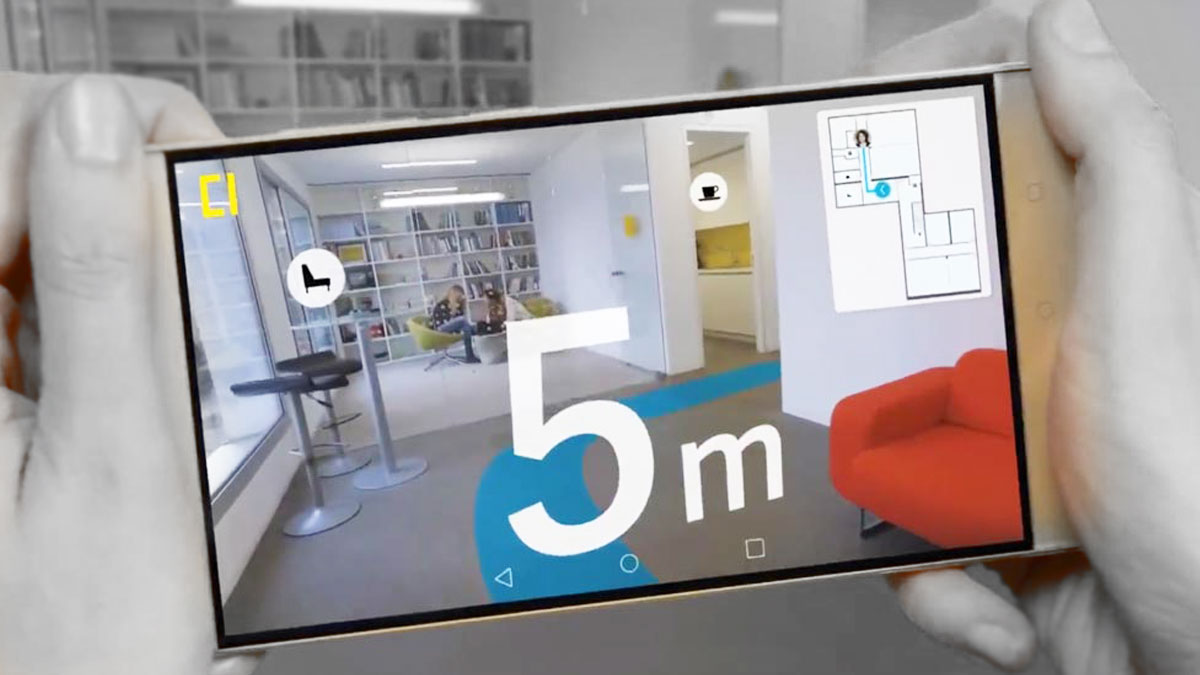Augmented Reality is one of the few innovations that are guaranteed to blow up in gigantic proportions in the coming years. It is projected to be integrated into everyday life, and revolutionise the way you perform even the smallest of functions. Indoor navigation is one of the ways you will rethink how you access malls, offices, multistoried entertainment centers, and other multifaceted public spaces. Read on to get an idea of what a mixture of these two can do, and what would fit your concept best.
Some existing solutions
Some of the existing AR indoor navigation systems like the APIs on Google’s ARCore and Apple’s ARKit, utilise some existing systems to give you a seamless integrated AR experience while helping you get to your destination in a more efficient and enjoyable way.
Some of the existing base technologies are discussed below:
1). GPS, one of the predominant tracking systems for outdoor, can also be used for indoor systems. GPS, if merged with accurate software for comprehensive AR overlays, can be a viable solution for a navigation system. Open your phone, and boom!- you have the entire building in 3D in the palm of your hand, while using no intrusive headset or app. It can then effectively show how to reach your final point, but till the development is achieved, it is a viable but bulkier solution.
2). Using a system that simultaneously adapts a map by referencing to the surroundings and objects while also adjusting a person’s coordinates, to create a perfect miniature 3D blueprint of the building or space. But as of now, only smaller areas are effectively able to employ this technology, and some other conditions make it difficult to be a suitable, no fuss process. Another issue is that offices, hotels and entertainment centres often have similar floors or areas in their premises, which makes this system muddled, and difficult to train.
3). A visual marker or QR code can be implemented at certain areas to let the software know exactly where the user is, and adjust accordingly to show the destination in the projection. This is the most simple solution, and the only drawback is the creation of markers and the planned positioning according to needs. This is highly effective, though even slight disruption of the markers may cause this to malfunction.
4). Bluetooth powered beacon technology has become one of the top researched topics in the navigation industry for a while. It sends signals to nearby smart devices and can be utilised for AR visualisation processes, and thus, AR integrated indoor navigation. Most systems use this, but the accuracy still isn’t such that it appeals to public masses. But bettering this aspect might lead to more popularity and usage.
Conclusion
The future of AR Indoor Navigation systems is sure to break down the barriers for transmission, and make commuting even easier for users. It is set to experience a steep growth curve, and is an important trend to keep in mind while planning future ventures, and investment opportunities. Innovative, sleek modules are going to gain an edge in this cutthroat competition, and holistic approaches meshed with other industries are sure to break the mold. Entertainment sectors will lap up this new form for advanced user satisfaction, and traditional outlooks will be given a run for their money.
